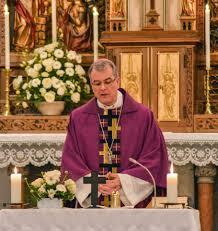
Self-employment tax is the largest tax burden for members of the clergy (pastors, priests, ministers, bishops, missionaries, etc.). In this article, you'll learn what self-employment tax is, why you should pay it, what income is included in this tax, and how to avoid costly fines and fees.
What is the self-employment tax?
Self-Employment Tax, or SECA as it is sometimes called (named after the Self-Employment Contributions Act of 1954), is a portion of a taxpayer's self-employment income that contributes to Medicare and Social Security. As taxpayers contribute to these funds, they get credit for the use of these benefits during their retirement years. For salaried taxpayers, these taxes are paid partly by the employer and partly by the employee. Since self-employed taxpayers do not have an outside employer, they are responsible for all payments. The share of taxable profit is 92.35%. 12.4% of the salary goes to the social insurance fund and 2.9% to the Medicare fund (hospital insurance). The 15.3% self-employment tax is then applied to the taxable income.
What are some sources of income that are subject to self-employment tax?
The IRS is clear on income subject to self-employment tax. All church salaries, taxes, baptismal, wedding, funeral payments, conferences, and any housing or utility allowances (less applicable deductible expenses) will be subject to self-employment tax.
Why can't my church remove it from my W-2?
Churches cannot pay any portion of the self-employment tax for clergy. In this way, the clergy risks being criminally charged with tax evasion. The IRS is very clear with the rules. Any payments made in error on behalf of the clergy by the church should be added to wages on the clergy's Form W-2 and reported as income. If clergy choose to have a portion of their salaries withheld for Social Security and Medicare tax purposes, they must make estimated tax payments.
Estimated Tax Payments: Not just for the rich and famous!
It is very distressing to prepare a tax return for clergy only to find that they made no estimated tax payments during the year. You might say it's a good thing you saved up to pay your tax bill in bulk in April. However, the IRS is a pay-as-you-go system: if you owe unpaid taxes and you haven't paid at least the previous year's tax during the year, you will be subject to costly fines! It can be frustrating to pay a bill of $5,000 and $350 in penalties and interest. The way to avoid this is to pay the estimated fees when the "quarterlies" are due. Write a check to the IRS (as well as your state) and send your payments well before they are due. You can pay with your credit card online, but there is a 1% charge - I don't recommend it.
How do I know how much I should pay in estimated fees?
If you're worried about paying the exact amount, use the total fees paid the previous year as a guide. If you earn similar amounts of money year-to-year, divide your total tax by 4. If your spouse gets a raise, you can increase withholding as a security measure. Your tax preparer can generate estimated pay stubs to accompany your mailed tax payments.
FOR MORE INFORMATION ON HOW TAXES MADE EZ INC. CAN BEST HELP YOU WITH YOUR TAX FILING NEEDS, PLEASE CLICK THE BLUE TAB ON THIS PAGE.
THANKS FOR VISITING.
